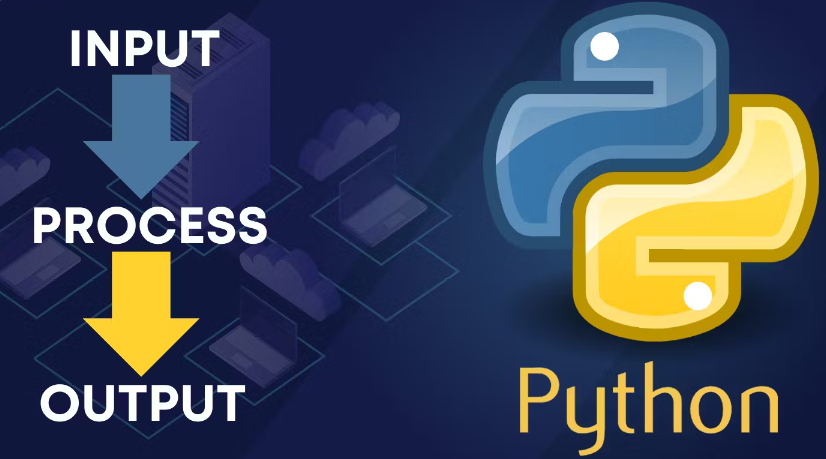User Input and Output in Python
In this post, you’ll learn how to use the input() function to take data from users and how to display data using print(). We’ll explore basic concepts with examples to understand user interaction in Python and conclude with exercises to practice what you’ve learned.
Taking User Input in Python
In Python, the input() function is used to take data from the user. This function displays a message (prompt) and then waits for the user to type something and press ENTER. The function then returns whatever the user typed, which is generally saved in a variable for further use.
Here’s a basic example of using input():
1
2
3
4
name = input("What is your name? ") # input() function takes user input
age = input("How old are you? ")
print("Hello " + name + ", you are " + age + " years old") # Output: Hello <name>, you are <age> years old
In this code, we ask the user for their name and age. We then use that information to print a personalized greeting.
Example: Resolving Cubic Equations
In this exercise, we’ll develop a program that solves cubic equations of the form (ax^3 + bx^2 + cx + d = 0). To achieve this, we ask the user to provide the coefficients (a), (b), (c), and (d).
To solve a cubic equation, we import the cmath module, which provides functions for working with complex numbers, a necessary step to calculate the solutions.
1
2
3
4
5
6
7
8
9
10
11
12
13
14
15
16
import cmath # Import cmath for complex number operations
a = float(input("Enter the value of a: "))
b = float(input("Enter the value of b: "))
c = float(input("Enter the value of c: "))
d = float(input("Enter the value of d: "))
delta_0 = b**2 - 3*a*c
delta_1 = 2*b**3 - 9*a*b*c + 27*a**2*d
C = ((delta_1 + cmath.sqrt(delta_1**2 - 4*delta_0**3))/2)**(1/3)
x1 = (-1/(3*a))*(b + C + delta_0/C)
x2 = (-1/(3*a))*(b + complex(-0.5, cmath.sqrt(3)/2)*C + delta_0/(complex(-0.5, cmath.sqrt(3)/2)*C))
x3 = (-1/(3*a))*(b + complex(-0.5, -cmath.sqrt(3)/2)*C + delta_0/(complex(-0.5, -cmath.sqrt(3)/2)*C))
print("The solutions of the cubic equation are: ", x1, x2, x3)
This program provides a good example of how arithmetic operators and complex mathematical functions in Python can be used to solve advanced mathematical problems.
Example: Calculating Final Course Grade
In this exercise, we’ll develop a program that calculates the final grade of a student based on three components: assignments, midterms, and a final project.
The final grade is calculated as follows:
- Assignments: 30% of the final grade (three assignments).
- Midterms: 40% of the final grade (two midterms).
- Final project: 30% of the final grade.
The user needs to provide the grades for the assignments, midterms, and final project:
1
2
3
4
5
6
7
8
9
10
11
12
task1 = float(input("Enter the grade for assignment 1: "))
task2 = float(input("Enter the grade for assignment 2: "))
task3 = float(input("Enter the grade for assignment 3: "))
midterm1 = float(input("Enter the grade for midterm 1: "))
midterm2 = float(input("Enter the grade for midterm 2: "))
final_project = float(input("Enter the grade for the final project: "))
avg_tasks = (task1 + task2 + task3) / 3
avg_midterms = (midterm1 + midterm2) / 2
final_grade = 0.3 * avg_tasks + 0.4 * avg_midterms + 0.3 * final_project
print("The final grade is: ", final_grade)
This program provides a good example of how arithmetic operators can be used to calculate averages and final grades.
Practice Exercises
Try the following exercises to apply what you’ve learned about user input and output:
Exercise 1: Cubic Equation Solver
Develop a program that takes user input to solve cubic equations of the form (ax^3 + bx^2 + cx + d = 0). Use the complex math (cmath) module as demonstrated above.
Exercise 2: Grade Calculator
Write a program that takes user input for assignment, midterm, and project grades and calculates the final grade based on given weightings.
More Information
User input and output are fundamental in Python as they allow interactive programming. Practicing these basics will help you build more dynamic programs and understand user-centered design.
For further reading and more detailed information, check out:
Next Steps: In the next post, we will cover Boolean Operators and Control Flow in Python. Stay tuned and keep coding!
